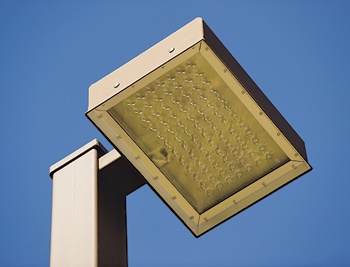It’s not a stretch, some researchers say, to suggest that we’re lighting ourselves to death.
For starters, as stars in our night skies vanish from view, many people worldwide are never in the dark. And the culprit—excessive outdoor lighting—is, according to experts, hurting our health, our emotions, our spiritual outlooks and our pocketbooks as billions of dollars are wasted annually around the globe on keeping things bright.
The good news, experts note, is that of all the artificial threats to our natural resources, light pollution—the illumination of the night sky by artificial light, decreasing the visibility of stars and other natural sky phenomena—is perhaps the most easily remedied. It’s a matter of public education and awareness, of shielding bright lights with well-designed fixtures, lowering bulb wattages and eliminating glare.
But of particular concern are the health and public safety issues grabbing researchers’ attention. The dark-sky movement is at a critical juncture, advocates say, pointing to a report issued in 2009 by the American Medical Association House of Delegates, the association’s principal policy-making body. The report, in part, addressed health and public safety, finding that:
• Light trespass, the spilling of excess artificial light onto someone else’s property, can disrupt humans’ and animals’ circadian rhythms—the biological clocks that smooth the natural transition from night to day. Light trespass also is “strongly suspected” as a cause of suppressed melatonin production, weakened immune systems and an increase in cancer rates, including breast cancer.
• Streetlight glare can cause pupil constriction, thus decreasing nighttime visibility and creating unsafe driving conditions.
Other countries are taking tough stances against light pollution. A 2010 report from the Council of Europe’s Committee on Environment, Agriculture and Local and Regional Affairs addresses excessive artificial light, stating that it is a threat to humans, plants, animals and their natural habitats. Light pollution, the report says, is robbing us of night skies, including many children, “who know of it only through books or cinematographic works … such as ‘Star Wars’!”
The proliferation of artificial light seems to be especially hard on wildlife. The extension of daylight can disrupt nocturnal animals’ breeding and migration cycles. Some birds—such as night-hunting owls attracted by glare—are killed when they crash into buildings. Reptiles shy away from artificial lights, meaning they have fewer places to hunt for food.
And sea turtle hatchlings confused by bright beach lighting often wander off in the wrong direction. (Although this is not a significant problem for the endangered Kemp’s ridley sea turtles on Padre Island National Seashore. According to Donna Shaver, division chief of Sea Turtle Science and Recovery for the National Park Service, the Kemp’s ridley hatchlings often are released in the morning, when lighting is not an issue. And if they are released at night, the Padre Island seashore remains adequately dark, she says.)
Bright lights can confuse humans, too. Counter to conventional thinking, experts say, people are not necessarily safer at night in the glare of overly bright lights. Some lighting-control experts argue that so-called security lights—such as unshielded floodlights—can actually encourage, not discourage, criminal activity.
Bill Wren, special assistant to the superintendent at the McDonald Observatory near Fort Davis, makes educational outdoor lighting-control presentations around Texas. During talks, he shows people two photographs of a man standing under a porch light. In the first picture, a shielded fixture is aimed down, directing light to the ground—putting the man, so to speak, in the spotlight with little shadow around him. But in the second picture, the fixture is aimed sideways, with light spraying up, down and all around, creating dark shadows around the man and making him less visible.
It brings to mind a passage from Desert Solitaire, a 1968 book written by the late Edward Abbey that chronicles his stint as a national park ranger at Arches National Monument in Utah.
One night at the park, Abbey goes for a walk in the dark and vows to not use his flashlight unless there is animal life worth investigating. “The flashlight,” he writes, “… is a useful instrument in certain situations but I can see the road well enough without it. Better, in fact.
“There’s another disadvantage to the use of the flashlight: like many other mechanical gadgets it tends to separate a man from the world around him. If I switch it on my eyes adapt to it and I can see only the small pool of light which it makes in front of me; I am isolated. Leaving the flashlight in my pocket where it belongs, I remain a part of the environment I walk through and my vision though limited has no sharp or definite boundary.”
——————–
Camille Wheeler is staff writer for Texas Co-op Power.

